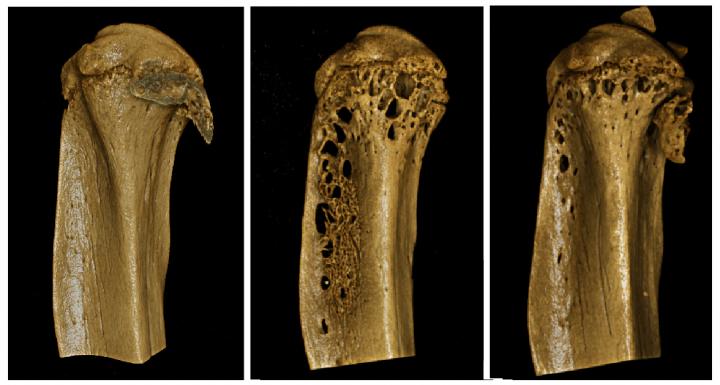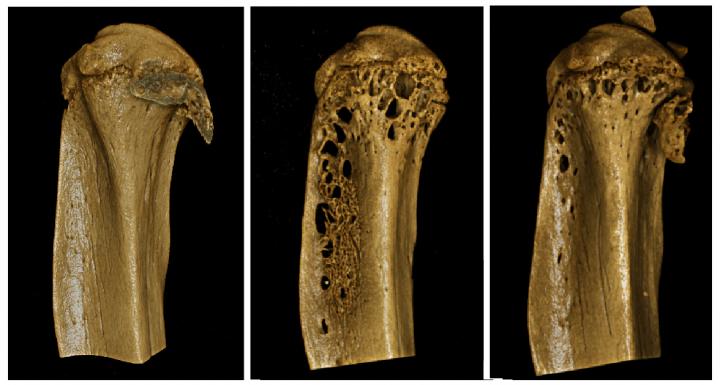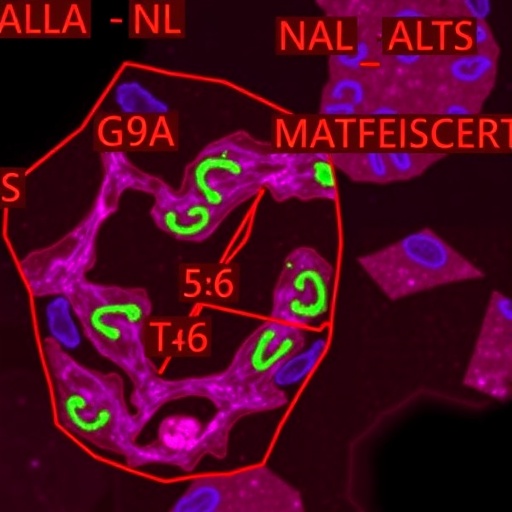
Credit: Dr Michelle McDonald
Friday 30 June, 2017: An Australian-led research team has demonstrated a new therapeutic approach that can re-build and strengthen bone, offering hope for individuals with the debilitating bone cancer, multiple myeloma.
The findings were published today in the medical journal Blood, and were presented at an international meeting of bone biology experts in Brisbane earlier this month.
The researchers tested a new type of treatment that specifically targets a protein called sclerostin, which in healthy bones is an important regulator of bone formation. Sclerostin halts bone formation, and the researchers speculated that if they could inhibit the action of sclerostin, they could reverse the devastating bone disease that occurs with multiple myeloma.
Dr Michelle McDonald and Professor Peter Croucher, of the Bone Biology Division of the Garvan Institute of Medical Research in Sydney, led the study.
"Multiple myeloma is a cancer that grows in bone, and in most patients it is associated with widespread bone loss, and recurrent bone fractures, which can be extremely painful and debilitating," says Dr McDonald.
"The current treatment for myeloma-associated bone disease with bisphosphonate drugs prevents further bone loss, but it doesn't fix damaged bones, so patients continue to fracture. We wanted to re-stimulate bone formation, and increase bone strength and resistance to fracture."
The new therapeutic approach is an antibody that targets and neutralises sclerostin, and in previous clinical studies of osteoporosis, such antibodies have been shown to increase bone mass and reduce fracture incidence in patients.
The researchers tested the anti-sclerostin antibody in mouse models of multiple myeloma, and found that not only did it prevent further bone loss, it doubled bone volume in some of the mice.
Dr McDonald says, "When we looked at the bones before and after treatment, the difference was remarkable – we saw less lesions or 'holes' in the bones after anti-sclerostin treatment.
"These lesions are the primary cause of bone pain, so this is an extremely important result."
The researchers have a biomechanical method to test bone strength and resistance to fracture, and found that the treatment also made the bones substantially stronger, with more than double the resistance to fracture observed in many of the tests.
They then combined the new antibody with zoledronic acid, a type of bisphosphonate drug, the current standard therapy for myeloma bone disease.
"Bisphosphonates work by preventing bone breakdown, so we combined zoledronic acid with the new anti-sclerostin antibody, that re-builds bone. Together, the impact on bone thickness, strength and resistance to fracture was greater than either treatment alone," says Dr McDonald.
The findings provide a potential new clinical strategy for myeloma. While this disease is relatively rare, with approximately 1700 Australians diagnosed every year, the prognosis is extremely poor, with less than half of those diagnosed expected to survive for more than five years.
Prof Croucher, Head of the Bone Biology Division at Garvan, says that preventing the devastating bone disease of myeloma is critical to improve the prognosis for these people.
"Importantly, myelomas, like other cancers, vary from individual to individual and can therefore be difficult to target. By targeting sclerostin, we are blocking a protein that is active in every person's bones, and not something unique to a person's cancer. Therefore, in the future, when we test this antibody in humans, we are hopeful to see a response in most, if not all, patients," Prof Croucher says.
"We are now looking towards clinical trials for this antibody, and in the future, development of this type of therapy for the clinical treatment of multiple myeloma.
"This therapeutic approach has the potential to transform the prognosis for myeloma patients, enhancing quality of life, and ultimately reducing mortality.
"It also has clinical implications for the treatment of other cancers that develop in the skeleton."
###
Dr McDonald was invited to speak at a prestigious conference earlier this month, in Brisbane, where she presented these findings to an international audience of bone biology experts. The conference was the inaugural combined meeting of the Australian and New Zealand Bone and Mineral Society (ANZBMS), the International Federation of Musculoskeletal Research Societies (IFMRS), and the Japanese Society for Bone and Mineral Research (JSBMR). Dr McDonald was also awarded an Outstanding Abstract Award at the conference for this work.
Media Contact
Brigid O'Gorman
[email protected]
040-608-4804
@GarvanInstitute
http://www.garvan.org.au/
############
Story Source: Materials provided by Scienmag





